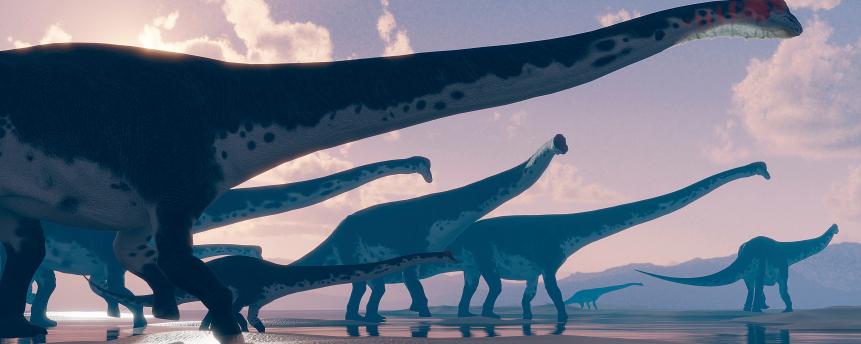
Peter Falkingham/Natural History Museum
Dinosaur Footprints from 200 Million Years Ago Discovered in Wales
Members of the public found the former dinosaur “trampling grounds” while at the beach in South Wales.
On a beach in Wales, footprints were discovered that scientists believe came from a prehistoric dinosaur some 200 million years ago.
Paleontology experts from London’s Natural History Museum helped lead a study of the tracks, published in Geological Magazine. The prints likely belong to early sauropods or a close relative to the species.
"We believed the impressions we saw at Penarth were consistently spaced to suggest an animal walking. We also saw displacement rims where mud had been pushed up. These structures are characteristic of active movement through the soft ground," Professor Paul Barrett said in the museum’s announcement of findings.
The footprints were found on a beach in Penarth, South Wales by members of the public and first reported to the museum in 2020. They’re believed to date back to the Triassic period, between 201-237 million years ago.
"We know early sauropods were living in Britain at the time," said Dr. Susannah Maidment, a paleontologist at the museum.
The tracks cover an area about 164 feet long, and each footprint measures about 1.6 feet long. The volume of prints indicates the area was a “trample ground” for dinosaurs.

MARK GARLICK/SCIENCE PHOTO LIBRARY
Digital animation of a herd of sauropods, the dinosaurs believed to have left the tracks at the South Wales beach.
"These types of tracks are not particularly common worldwide, so we believe this is an interesting addition to our knowledge of Triassic life in the UK. The record of Triassic dinosaurs in this country is fairly small, so anything we can find from the period adds to our picture of what was going on at that time," said Barrett.
Scientists hope this discovery will reveal information about the dinosaur’s migration patterns and behavioral qualities around how they walked.
The museum said the footprints, which are already highly weathered, will continue to remain at the beach until they are washed away by the shore.


















